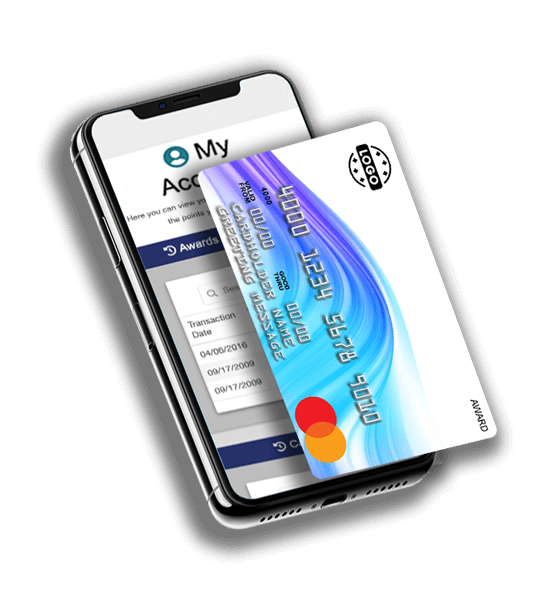Online rewards programs have become common among businesses. It’s estimated that more than 90 percent of companies currently use some form of online reward or loyalty program. Rewards programs are a great way to boost customer loyalty and increase your business’s revenue. Studies have shown that companies that implement strong reward programs grow their revenue 2.5 times faster than their competitors and generate higher returns for their shareholders.
If you wonder how to implement a rewards program for an online business, you must learn more about your options and common pitfalls to avoid when creating a program.
What is an Online Rewards Program?
Online rewards programs offer benefits to both consumers and businesses. These programs are also known as loyalty programs, designed to reward consumers who interact with your brand repeatedly. These programs encourage customers to continue to buy from you rather than your competitors.
Why Use Online Rewards Program
Online rewards programs offer several benefits to every kind of business, including:
- Improved customer retention
- Increased customer referrals
- Boosted revenue
- Stronger relationship with customers
- Improved customer lifetime value
- Improved customer satisfaction
- Increased sales
5 Popular Types of Online Rewards Programs
Knowing how to implement a rewards program for an online business starts with choosing the right rewards for your program. Here’s a look at five of the most popular online rewards programs.
1. Point-Based, Online Reward Programs
Points-based reward programs are a popular channel incentive, aimed at motivating the 60% of your sales team, or channel sales partners, with the most opportunity to grow your business. Today, most point-based incentives are online, known commonly as online reward programs. They offer your award recipients access to a variety of rewards, including merchandise (electronics, home goods, jewelry, tools, sporting goods and more!), travel, concerts and events, theater and movie tickets, charitable causes, sponsor branded awards. Best-in-business incentive providers even offer a white glove service where your high earners can redeem for custom rewards.
Ultimately, point-based programs create a psychological impact, attaching the reward to your brand. When setting up a points-based incentive program, reward customers with points for their purchases, meeting or exceeding sales quotas, reviews, social media engagement, and for any other behavior that you are trying to reinforce.
Point-based online rewards programs are a great option because their flexibility allows them to meet nearly any company’s needs and provides a tracking system for compliance requirements.
2. Charity-Based Rewards Incentives Value-Based Online Rewards Programs
Charitable donations connect with people on a deeper level. For example, rather than providing customers with rewards directly, your business can donate a percentage of their purchase to a non-profit organization or charity program of their choosing. You can also offer charity donations and fundraising opportunities in an online rewards catalog, so participants can spend reward points on these causes.
Local charities or community charities that your company cares about will help connect your business values to your customers. Therefore, it’s worth asking – what are our employees passionate about? What does our community need? How can we give back?
Charity-based rewards are a feel-good win-win for both you and your customers.
3. Tiered Rewards Programs
These are similar to point-based programs, but customers earn a tiered membership instead of earning points. Customers can rise through these membership tiers by completing tasks or making purchases.
Each membership tier rewards customers with benefits. These benefits can be discounts on services or purchases, free shipping, cashback incentives, and more. However, tiered memberships can also require activity from consumers. For example, a customer may have to make a purchase or complete a task in a specified amount of time to avoid falling to a lower membership tier.
Similar to point-based programs, tiered reward programs are flexible and can be used for several business strategies.
4. Debit and Gift Card Online Reward Programs

Debit and gift cards, similar to merchandise, can be awarded to program participants via an online catalog. Participants can spend earned points on cards in the catalog to receive card numbers they can then use for online shopping.
There are two major advantages of debit and gift card online rewards:
- Debit cards can be used anywhere, giving them the versatility of cash. A wide range of gift cards gives participants a similar power of choice, allowing everyone to choose their favorite brands and stores.
- Everyone has used gift and debit cards, so you don’t have to spend time teaching participants how to use the rewards program.
Debit and gift card rewards can be distributed to participants quickly and easily. Because of their versatility and ease of use, recipients tend to spend them right away. This makes them an excellent reward option when you want a fast turnaround and impact, as with sales incentive performance funds (SPIFFs), for example.
5. Referral Programs
Referral online rewards programs are a great way to connect with consumers while increasing the number of customers who do business with you. Referral programs provide customers with an incentive to refer their family and friends to your business. For example, they may receive a special discount, points, free shipping, and so on with each successful referral. These programs essentially turn your loyal customers into advocates for your brand.
You can further incentivize this program by rewarding both the customer who made the referral and the new customer. For example, you could provide both your loyal and new customers with a discount on a purchase or subscription.
Common Mistakes When Creating an Online Rewards Program
You must understand the keys to effective rewards programs and the common mistakes businesses make when implementing them. Common mistakes that you must avoid when creating a rewards program include:
- Creating a rewards program that is too complicated to understand.
- Failing to inform customers about the new rewards program.
- Creating a rewards program that does not provide customers with enough value.
- Failing to explain how the rewards program works.
- Creating a rewards program without goals and KPIs to ensure program effectiveness.
- Not dedicating the time and resources or selecting a service level needed to run and maintain the program effectively.
- Failing to refresh the program annually or bi-annually. must keep people interested – it’s a marketing strategy, ultimately.
How to Implement a Rewards Program for an Online Business

The first step of properly implementing a rewards program for an online business is determining what type of rewards program will best suit your needs.
1. Determine your objectives.
The goals of your rewards program should be specific and measurable, with an end-date in mind. For example, do you want to achieve a 10% lift in sales in one quarter? Choose a goal that aligns with your overarching corporate objectives.
2. Choose your audience.
Once you know what your goals are, you should identify the group of channel partners, salespeople, employees, or customers who have the greatest ability to influence that goal. Once you’ve identified this group, you’ll know who your rewards program audience should be.
3. Establish your budget.
You’ll need to know not only how much you can spend on a rewards program, but where the funds will come from. Sales and marketing could split the program investment, for example, or you could use marketing development funds (MDFs).
4. Identify key performance indicators (KPIs).
These are the data and metrics that let you know whether your program is on the path to achieving its goals. For example, you can analyze the percentage of invited participants who have signed up for the program, look at the percentage of registered participants who are active, or assess the reward redemption rate.
5. Choose your online rewards platform.
The reward program provider you partner with should have technology, services, and expertise that help you achieve your goals.
6. Market your program.
Exciting, multichannel marketing campaigns such as events, flyers, emails, and call campaigns will keep your participants informed and engaged through the program’s lifecycle.
7. Onboard and train participants.
An easy-to-use, intuitive reward platform will help you minimize the time needed to implement the program, but a period of training and onboarding will still be necessary so you can ensure everyone knows how to use the program and is on the same page about its purpose, rules, and processes.
8. Manage and analyze your program.
Track the KPIs you identified in the program’s initial stages. Conduct regular program reviews with your program provider and/or those held accountable for the program’s success. Regular reporting is important to keep the program on-track for success.
9. Optimize and improve.
When your program is over, you should have a great amount of insights, whether you met your goals or not. The data you analyze at the program’s end will give you insights on how to create effective program goals and sales/marketing strategies in the future.
Once you have chosen goals for your online rewards program, it’s essential that you roll out the program in an effective way and accurately assess its performance. If you do this, you’ll avoid common rewards program mistakes and create value for your customers that increases your bottom line.



